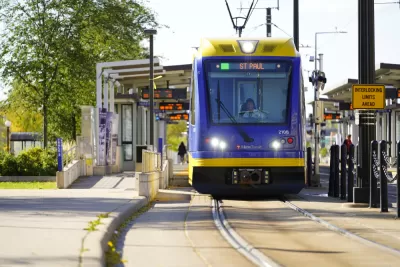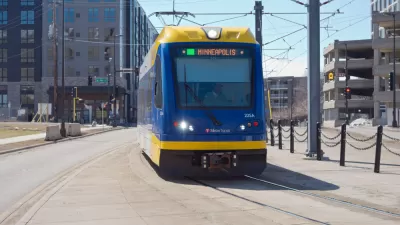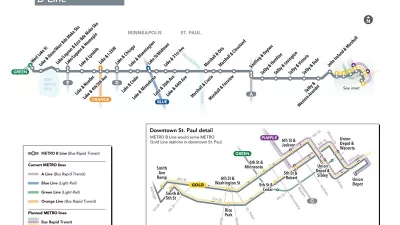Showing refugee and immigrant residents how to use public transportation can improve access to essential services, jobs, and education, but a more robust transit system is needed to effectively serve all who need it.

A nonprofit in the Twin Cities is helping new immigrants and refugees navigate the region’s public transit system in an effort to make jobs, shopping, schools, and other services more accessible to new Americans. Volunteers with the International Institute of Minnesota (IIMN) pair up with clients who want to learn how to get around on local transit but speak and read limited English, reports Henry Pan in Next City.
In spite of the organization’s efforts, obstacles remain for people who work in more remote areas not served by Metro Transit, which has been slow to recover after losing both ridership and drivers during the pandemic. According to the article, “year-to-date ridership as of June remains at 49% of year-to-date ridership in June 2019.” And while the agency is taking actions to include more translated materials, “They also learned those who do not understand English might not have necessarily understood the content being translated in their native language – in part because they may not be fully literate in their primary language, rendering the agency’s efforts moot.”
Language barriers aside, Pan notes, “Perhaps the answer to making transit service accessible to those who do not understand English is to simply have more frequent service that goes where people need to go.”
FULL STORY: How The Twin Cities Is Making Transit Accessible To Immigrants And Refugees

Planetizen Federal Action Tracker
A weekly monitor of how Trump’s orders and actions are impacting planners and planning in America.

Maui's Vacation Rental Debate Turns Ugly
Verbal attacks, misinformation campaigns and fistfights plague a high-stakes debate to convert thousands of vacation rentals into long-term housing.

San Francisco Suspends Traffic Calming Amidst Record Deaths
Citing “a challenging fiscal landscape,” the city will cease the program on the heels of 42 traffic deaths, including 24 pedestrians.

Defunct Pittsburgh Power Plant to Become Residential Tower
A decommissioned steam heat plant will be redeveloped into almost 100 affordable housing units.

Trump Prompts Restructuring of Transportation Research Board in “Unprecedented Overreach”
The TRB has eliminated more than half of its committees including those focused on climate, equity, and cities.

Amtrak Rolls Out New Orleans to Alabama “Mardi Gras” Train
The new service will operate morning and evening departures between Mobile and New Orleans.
Urban Design for Planners 1: Software Tools
This six-course series explores essential urban design concepts using open source software and equips planners with the tools they need to participate fully in the urban design process.
Planning for Universal Design
Learn the tools for implementing Universal Design in planning regulations.
Heyer Gruel & Associates PA
JM Goldson LLC
Custer County Colorado
City of Camden Redevelopment Agency
City of Astoria
Transportation Research & Education Center (TREC) at Portland State University
Jefferson Parish Government
Camden Redevelopment Agency
City of Claremont





























